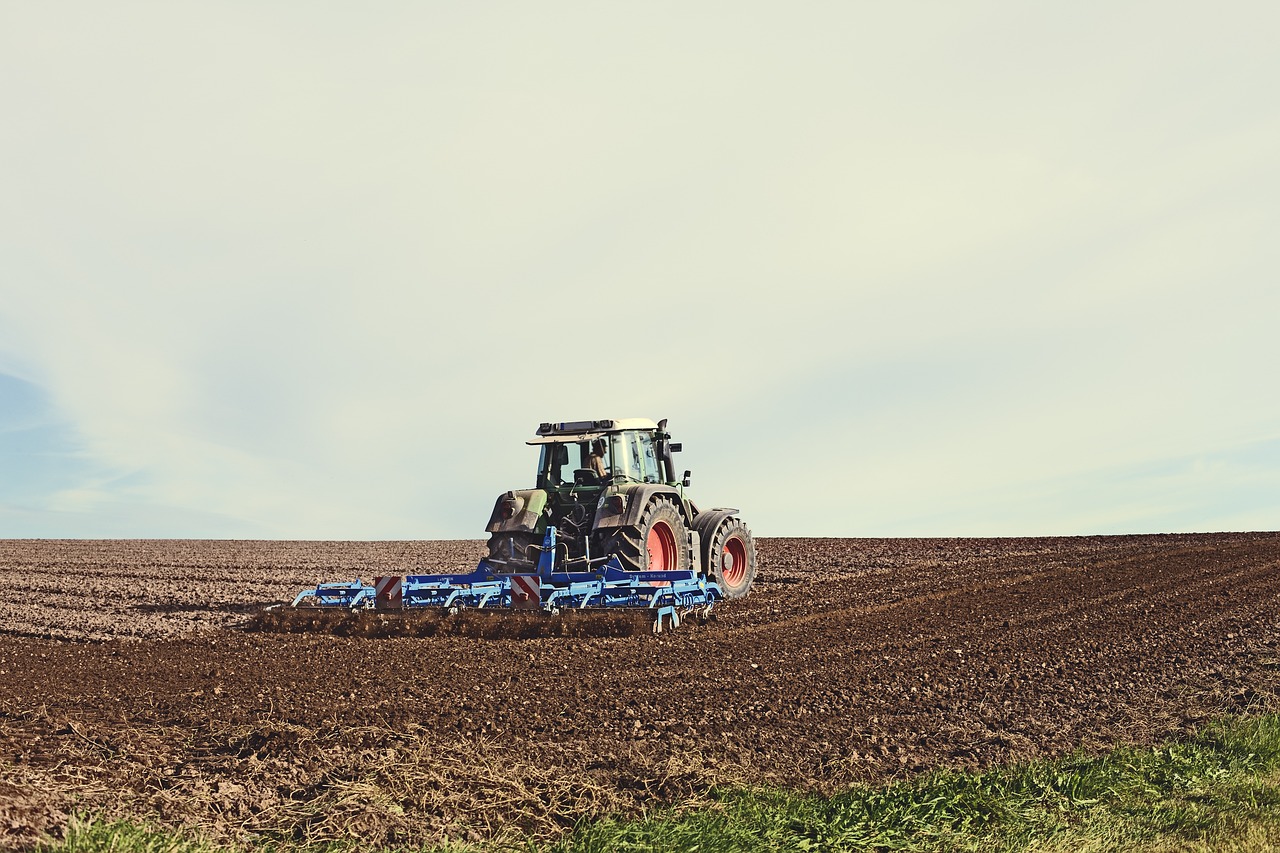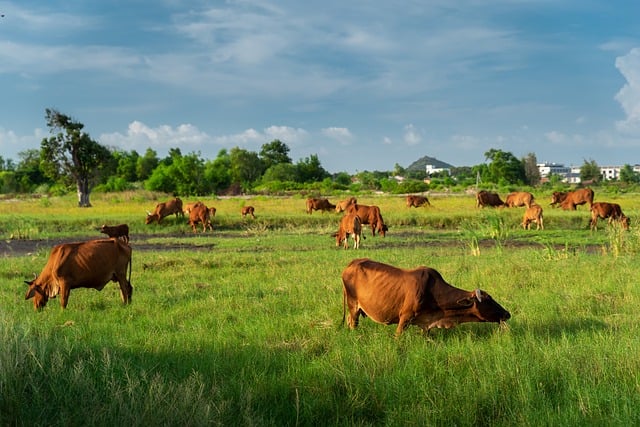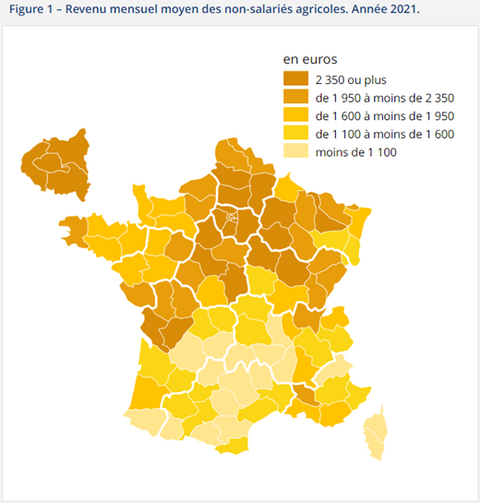
According to the latest official statistics from INSEE, the average annual income of farmers was €1,620 per month in 2021, but this figure conceals wide disparities.
The question of farm income is crucial if you want to buy a farm. It will be difficult to put together a financing plan without forecasting your future income. It's also a sensitive issue from a political and trade union point of view.
We'd like to shed some light on the subject, and tell you which sources to consult for reliable data.
Farm income is not the same as the take-home pay received by an employee.
It is in fact "accounting" income, which is the difference between the farm's income and expenses. What's more, it is an accounting income that is not necessarily visible in the form of available cash.
To measure the economic performance of farms, it is often more appropriate to look at Gross Operating Profit (EBITDA).
In addition, a distinction must be made between the income of the farm and that of the farmer. The majority of farms are in the form of companies, so the result must be divided by the number of partners involved in the work.
This figure may also be very different from the remuneration received by the farmer.
Example:
The farm's book income is €30,000. The farmer pays himself €1,500 a month, or €18,000 a year. The difference stays with the business and can be used for investment, to increase livestock numbers, for cash flow or to reduce outstanding debts.
Conversely, if the farmer takes out €3,000 a month, that's €36,000. The difference of €6,000 will reduce available cash, increase outstanding debts, etc.
The remuneration that farmers pay themselves is generally lower than their income. This is the result of investments made by farmers and forced capitalisation.
The financing of land is a telling example:
You buy 20 hectares of land for €6,000 per hectare, i.e. €120,000.
With a loan at 4% over 20 years, your annual repayments will be €8,829.
The average amount of interest paid each year, which reduces the result, is €2,830.
The difference of €5,999 per year :
This situation will be the same as soon as a farmer self-finances at least part of an investment. Farmers therefore often develop their assets to the detriment of their immediate income.
It's difficult to talk about income without talking about working time. While some farm incomes can be high, they are related to the amount of time worked.
According to INSEE, farmers work an average of 55 hours a week, 20 hours more than other workers.
What's more, 88% of farmers also work at weekends.
To analyse farmers' incomes in France, it is essential to rely on reliable and recognised data sources. These include INSEE (Institut national de la statistique et des études économiques), MSA (Mutualité sociale agricole) and Agreste (the Ministry of Agriculture's statistics and forecasting department), which provide detailed, up-to-date information.
INSEE: INSEE collects and publishes economic and social data, including farm household incomes. These data provide an overview of farmers' economic conditions.
MSA: As the social security body for the agricultural sector, MSA collects data on contributions and benefits, providing an overview of farmers' declared incomes.
Agreste: This service of the Ministry of Agriculture provides detailed agricultural statistics, including information on incomes by type of production and by region.
These sources are essential for obtaining an accurate picture of farm incomes and for identifying current trends and challenges.
Farm income is highly variable. They are directly linked to :
Price fluctuations: The prices of agricultural products can vary considerably on the markets, directly influencing incomes. For example, in 2023, total agricultural production fell by 1.5% in value terms, mainly due to lower cereal prices.
Climatic conditions: Extreme climatic events, such as droughts or floods, can have a devastating impact on harvests and, consequently, on incomes.
Agricultural policies: Subsidies and financial aid, both at national and European level, also influence incomes. The European Union's Common Agricultural Policy (CAP) is a key element in this context. The same applies to support measures for agricultural crises (disasters, bird flu, etc.).
These factors combine to create a complex economic landscape for French farmers, requiring constant adaptation and rigorous farm management.
The average income of farmers in France varies considerably depending on a number of factors. In 2021, the average income of farmers was €1,620 per month (source: INSEE). This figure is barely at the level of the minimum wage, but represents an improvement on previous years.
Average income varies considerably depending on the tax regime chosen. It is logically lower for the smallest farms, which are subject to the Micro-BA system.
|
Régime fiscal |
Revenu mensuel moyen en 2021 |
|
Micro-BA |
650 € |
|
Bénéfice Réel |
1 910 € |
This table concerns only farmers taxed on actual profits.
|
Production |
Revenu mensuel moyen en 2021 |
|
Production agricole |
1 860 € |
|
Céréales et grandes cultures |
2 150 € |
|
Culture de légumes, fleurs, plantes |
2 800 € |
|
Culture de vignes |
2 760 € |
|
Arboriculture |
2 440 € |
|
Production de bovins |
1 480 € |
|
Production d'ovins, caprins, équidés, autres animaux |
680 € |
|
Production de granivores |
1 710 € |
|
Culture et élevage combinés |
1 880 € |
|
Autres (sylviculture, services d’aménagement paysager, etc.) |
2 330 € |

Source INSEE
Agreste provides us with data on the pre-tax accounting income of a representative sample of farms (FADN network).
This income is divided by the number of non-salaried workers on the farm.
|
Production |
2021 |
Variation / 2020 |
2022 |
Variation /2022 |
|
Céréales et oléoprotéagineux |
57 114 |
+205,2% |
66 381 |
+10,0% |
|
Autres grandes cultures |
55 251 |
+56,5% |
89 599 |
+45,9% |
|
Maraîchage |
43 301 |
-16,5% |
44 461 |
+4,1% |
|
Horticulture |
45 914 |
+19.2% |
30 012 |
-28,7% |
|
Viticulture |
47 590 |
+24.4% |
78 590 |
+43,8% |
|
Fruits et autres cultures permanentes |
46 475 |
+47,6% |
29 360 |
-38,7% |
|
Bovins lait |
35 931 |
+35,8% |
54 473 |
+36,8% |
|
Bovins viande |
20 444 |
+35,7% |
26 601 |
+25,8% |
|
Ovins et caprins |
21 586 |
+2,5% |
19 819 |
-18,1% |
|
Porcins |
24 790 |
-41,2% |
124 409 |
+371,3% |
|
Volailles |
35 462 |
+23,0% |
58 317 |
+57,3% |
|
Polyculture, polyélevage |
39 781 |
+69,0% |
49 903 |
+14,1% |
|
Ensemble |
41 165 |
+53,3% |
56 014 |
+28,2% |
There will be a sharp rise in farm incomes in 2021 and 2022. These 2 years are exceptional: they are the highest in terms of farm income, and 45% higher than the average for the last 20 years.
With the exception of sheep and goat farming, the income of livestock farmers is set to catch up.
Sources :
This is a disputed figure taken from MSA statistics for 2017 and based on 2016 income.
For this calculation, the MSA took into account all farmers with at least one hectare of useful agricultural area, a threshold far removed from the average size of farms, which was 69 hectares in 2020.
These statistics therefore include retired farmers, small-scale farmers who often work several jobs and therefore have other incomes, etc.
However, we know that average figures mask the lowest incomes, including situations of poverty. Here are some figures for 2021:
In view of the controversy surrounding these figures, the MSA no longer communicates on the average income of farmers.
We do, however, have some information on the social security contributions collected by the MSA. These contributions are based on farmers' incomes, and changes in these contributions are therefore a sign of changes in incomes.
|
Année |
Variation des cotisations sociales |
|
2021 |
+1% |
|
2022 |
+2.1% |
|
2023 |
+16% |
It should be noted that social security contributions are levied either on the previous year's income or on the average income over the previous 3 years, depending on the options chosen by farmers.
This positive trend in contributions received means that we can only report an increase in recent income of probably more than 15%.
As the figures show, it is possible to earn a good living as a farmer, even if you don't have to work long hours.
While incomes in 2021 and 2022 are very good overall, these 2 years are exceptional compared with the last 20 years.
Farm incomes are highly irregular, and each sector regularly experiences crises, whether linked to climatic phenomena or the global price situation.
This highly variable element needs to be taken into account in any agricultural financing project. And you need to be rigorous in your day-to-day management: optimise your income and control your costs.